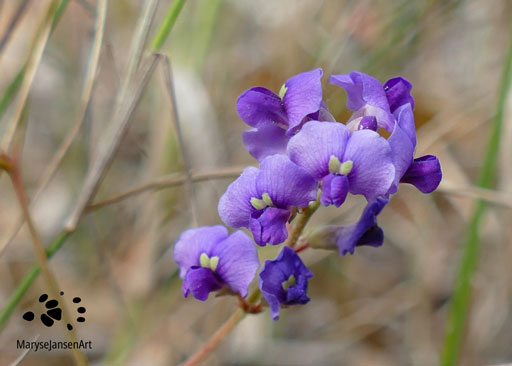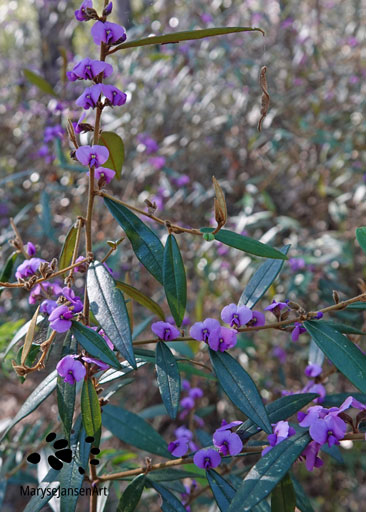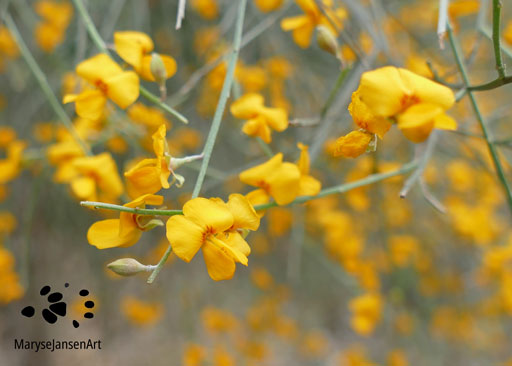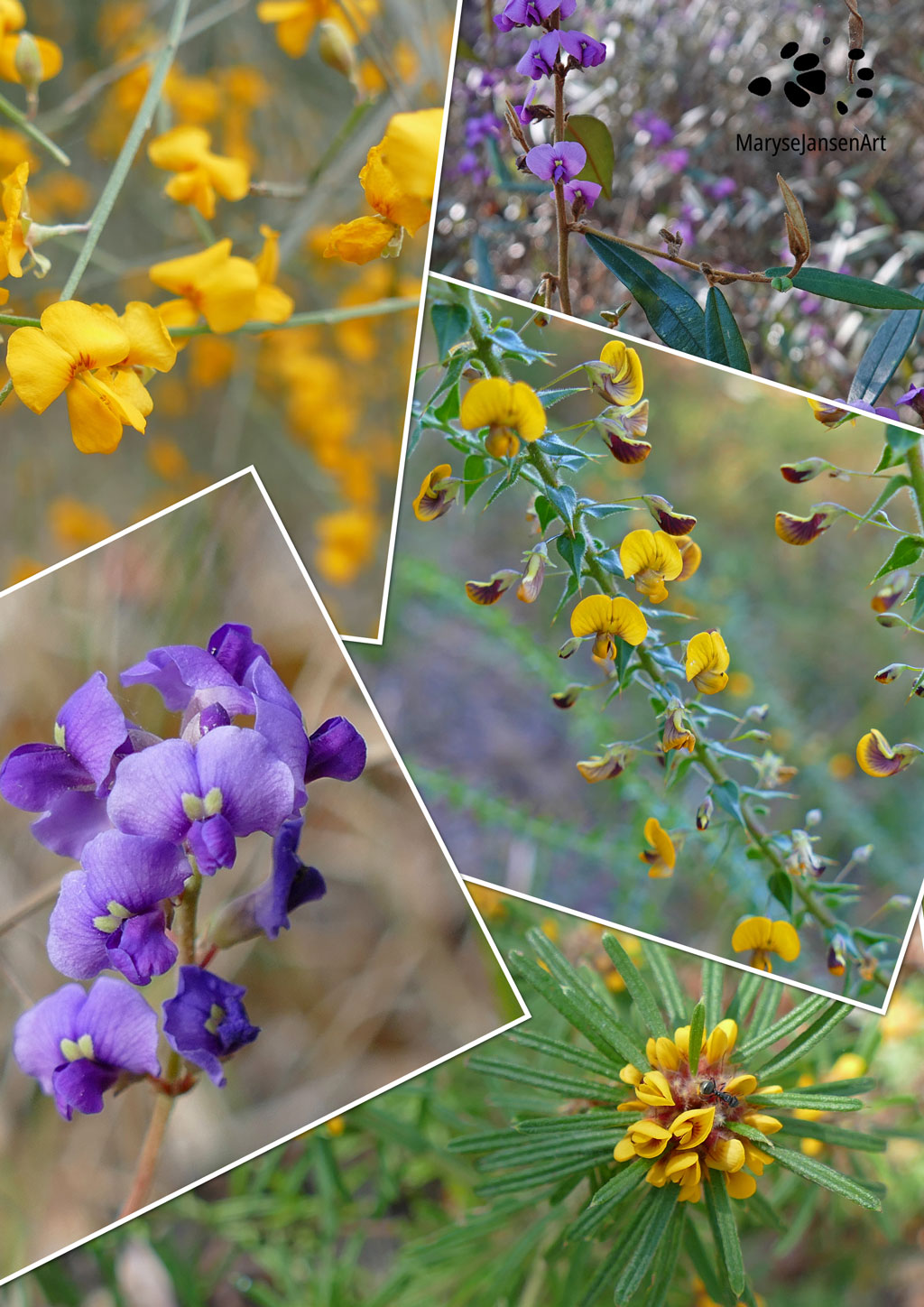Wildflower Photography with marysejansenart
Zooming in on small wildflowers – part 2
Table of Contents
Charming Pea Flowers
Walking through the Australian bush all year round is never dull. There is always something interesting going on. I love how during winter and spring the bush is decorated with lots of pretty and colourful wildflowers. Particularly charming are the pea flowers (Fabaceae). This group contains a wide variety of plant types, ranging from trees and shrubs to ground covers, so the decorations occur on all levels.
There are about 130 different flowering plants in the Fabaceae family, all native to Australia. They bloom with butterfly shaped flowers which come in lots of colours, mainly yellows and purples. Most of the pea flowers are small, but since there are lots on one plant or tree, you’ll be sure not to miss them!
Purple Pea

Let’s begin to have a look down at ground level, and zoom in on this ‘Purple Pea’. I fell instantly in love with the pretty little purple pea flowers of the Native Sarsaparilla (Hardenbergia Violacea). This plants’ flowers can typically be seen in winter and spring. It’s a scrambling, climbing vine which grows in open forests and woodlands in eastern and south-eastern Australia. The plant produces small flowers (10mm) and large dark green leathery leaves (10x5cm).
When it’s not flowering you barely notice the plant as it winds it’s way along the forest floor. But when the season is right, suddenly these intense purple clusters of flowers pop their heads up and it looks like gems have been sprinkled on the forest floor! It has many alternative names such as Purple Coral Pea, Lilac Vine and Warraburra. The most fitting nickname in my opinion is Happy Wanderer!
Woolly Bush Pea

Just above the ground the Woolly Bush Pea (Pultenaea petiolaris) makes an appearance. It is a funny looking small spreading shrub which grows only up to 30cm high and 40cm wide. You will find it on dry stony areas in in the understorey of Eucalypt Forests. It’s native to north-eastern New South Wales and parts of Eastern Queensland. The plant is easily recognizable by the way the flowers grow in dense terminal heads. The flowers are yellow with orange markings. The plant flowers in winter and spring. Leaves are narrow with a groove in the middle and alternate.
Short-leaved Bitter Pea Flowers

Looking a little bit higher up we find the Short-leaved Bitter-pea Bush. Short-leaved Bitter-pea (Daviesia villifera) is also known as Prickly daviesia. It is a dense shrub, up to 2m tall, with tiny stiff and pointy leaves. It flowers in winter and spring with very tiny yellow pea flowers (5mm) with red markings. Despite being small, in this case also the sheer number of flowers on the plant makes them noticeable as the shrub is dotted with bright yellow specks. It is a hardy plant and grows on stony soils on dry ridges and slopes in Queensland and New South Wales.
Purple Pea Bush

Around the same height as the yellow dots of the Short-leaved Bitter-pea Bush, but also extending to a bit higher up, the Purple Pea Bush colours large parts of the forest purple. It nicely complements the purple of the Native Sarsaparilla that we found on ground level after finding all that yellow in between!
Purple Pea Bush (Hovea acutifolia) is a 1-4m tall shrub with dark green narrow leaves which are about 7cm long. It grows in forests along the central-eastern coast of Australia and prefers a shady spot. During winter and spring it’s covered in masses of purple pea flowers which really livens up the understorey of the forest!
Flower Shower

Finally the scene is topped off by this splendid display which I called ‘Flower Shower’.
This is Dogwood (Jacksonia Scoparia), a tall shrub or a small tree (up to 4m) with pendulous branches and no real leaves (except in young plants). The common name of Dogwood is said to refer to the smell from the burnt wood. It’s also known as Winged Broom-pea. It flowers abundantly in spring with masses of yellow pea flowers. It looks a bit like a fountain or a shower of yellow flowers coming of those hanging branches. It’s a splendid display in the Australian bush! Dogwood occurs in south-east Queensland and eastern New South Wales.
Enjoying wildflowers
I hope I’ve been able to paint you a picture of all these beautiful layers of colour and that you’ve enjoyed looking at these little flowers as much as I do on my walks!
If you’d like to enjoy these beauties year round, please head to my shop and get one of my flower images up on your wall, or maybe on a bag, coffee mug, phone case or t-shirt? There are many options!
If you’d like to read ‘Zooming in on small wildflowers – part 1’, please click here. For part 3, click here.


